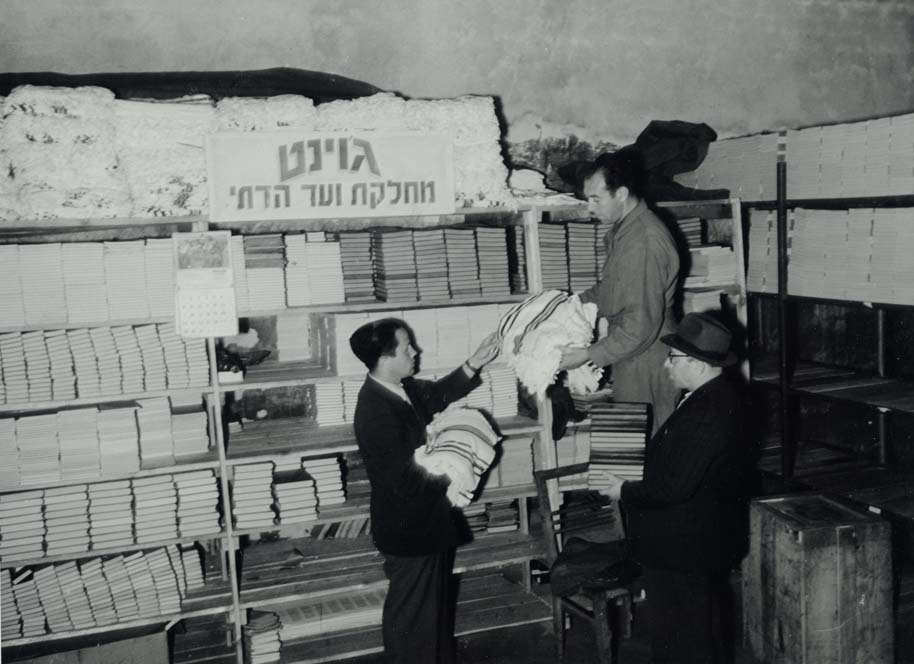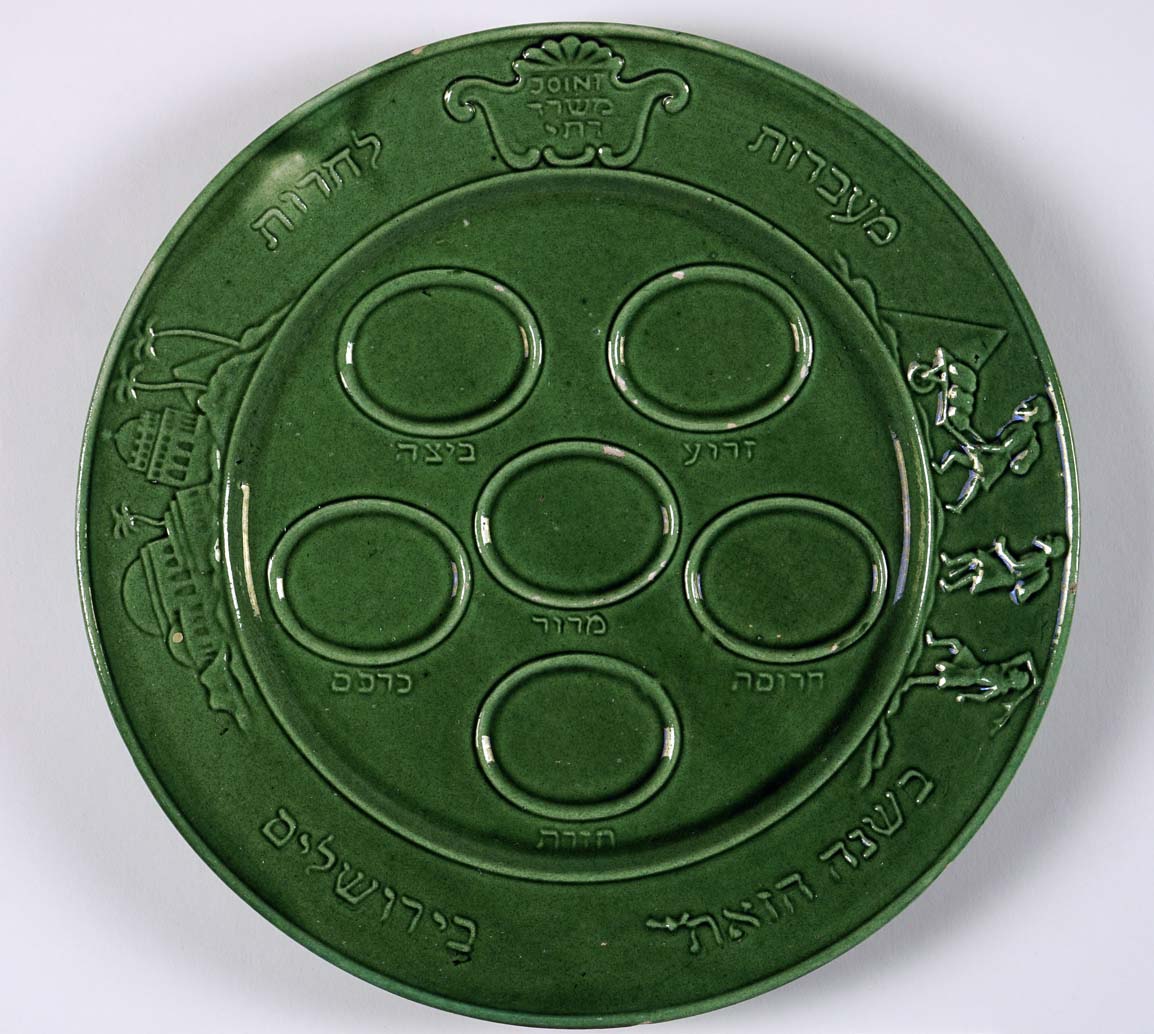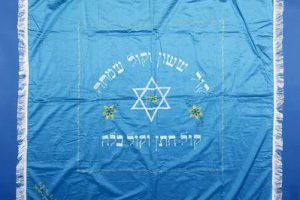
Distribution of Religious Items
Products of Ceramic Workshop of “the Joint” in Germany
With the passage of time, items that were distributed have morphed into organizational heirlooms imprinted with the JDC legacy. Nowhere is this more evident than with religious materials JDC manufactured and disseminated as part of its far-reaching efforts to rebuild and sustain European Jewry in the aftermath of World War II. This assistance touched upon every aspect of Jewish religious, communal, and cultural life. JDC distributed food, clothing, tools, equipment, and educational materials to the displaced persons (DP) camps of Germany, Austria, and Italy, which were housing close to 250,000 individuals by 1947. JDC also brought in tens of thousands of machzorim and talitot.
Chanukah supplies were also distributed in the DP camps. Along with candles, menorahs were given to survivors in order to celebrate the holiday. This featured menorah was manufactured with the help of the “Joint” in 1947 in Marktredwitz, Germany, by liberated Jews for use among Jewish displaced persons. Today very rare, 351 were assembled in the ceramic workshop in Germany between June 1947 and February 1948.
The menorah was a product of the Employment Board, established in the spring of 1947 to guide the workshops in the JDC work projects program in the American Zone of Germany, consisting of representatives of JDC and the Central Committee of Liberated Jews of Bavaria, and the Jewish Agency for Palestine. JDC, the US Army, and the Preparatory Commission of the International Refugee Organization (PCIRO) furnished the Employment Board with raw materials. The aim of these programs was to equip survivors with new skills, while effectively furnishing displaced persons with materials for everyday living and religious observance.
A report on activities in the U.S. Zone of Germany for the month of November 1947 states that “the ceramic workshop is one of our best producing units. . . . an order received from the religious department for Chanukah candleholders has been completed and a very successful product has been manufactured, delivered, and is now being distributed.”
Indeed, a lyrical menorah was created, but it was no easy feat. The report went on to say that “the people employed in this workshop have never had any previous experience with ceramic work but have made remarkable progress in learning the trade. The work is dirty and hard, and the workers must be given credit for their efforts.” The fact that untrained individuals were able to complete the manufacture of the menorot should be recognized. The hallmark on the back of the menorah identifies its makers as the “She-erit ha-Peletah of Germany,” which roughly translates to the remaining few. It is difficult to ascertain exactly how survivors felt working in the ceramic workshop, but one could surmise that learning a new trade gave them fresh purpose in life, and producing a religious item elicited pride in their Jewish identity.
The Chanukah menorah bears striking resemblance to the JDC seder plate, which was also produced in the ceramic workshop of JDC for use among displaced persons. Both are made of ceramic with the same green glaze, and carry similar intrinsic meanings tied to Jewish peoplehood. The seder plate’s inscription of “This Year in Jerusalem” is written in opposition to the traditional saying of “Next Year in Jerusalem,” customarily said during the holiday of Passover when referring to where the holiday will be celebrated next time. This inscription embodies the hope of its creators, that on the eve of Israel’s birth, lives in the Jewish homeland would soon be theirs.
Hope can also be sensed in the composition of the menorah. It is made up of a tree cut down almost to a stump, with a branch growing out from its side. The branch, which acts as the menorah’s “shamash” or helper candle, has spouting leaves, symbolizing sustained life. Illustrated in this design is the notion that despite two-thirds of European Jewry being erased from existence, a nation was not lost; instead, it was reborn. Endurance and renewal are embedded in these religious items, qualities that can be felt even stronger considering their creators.






